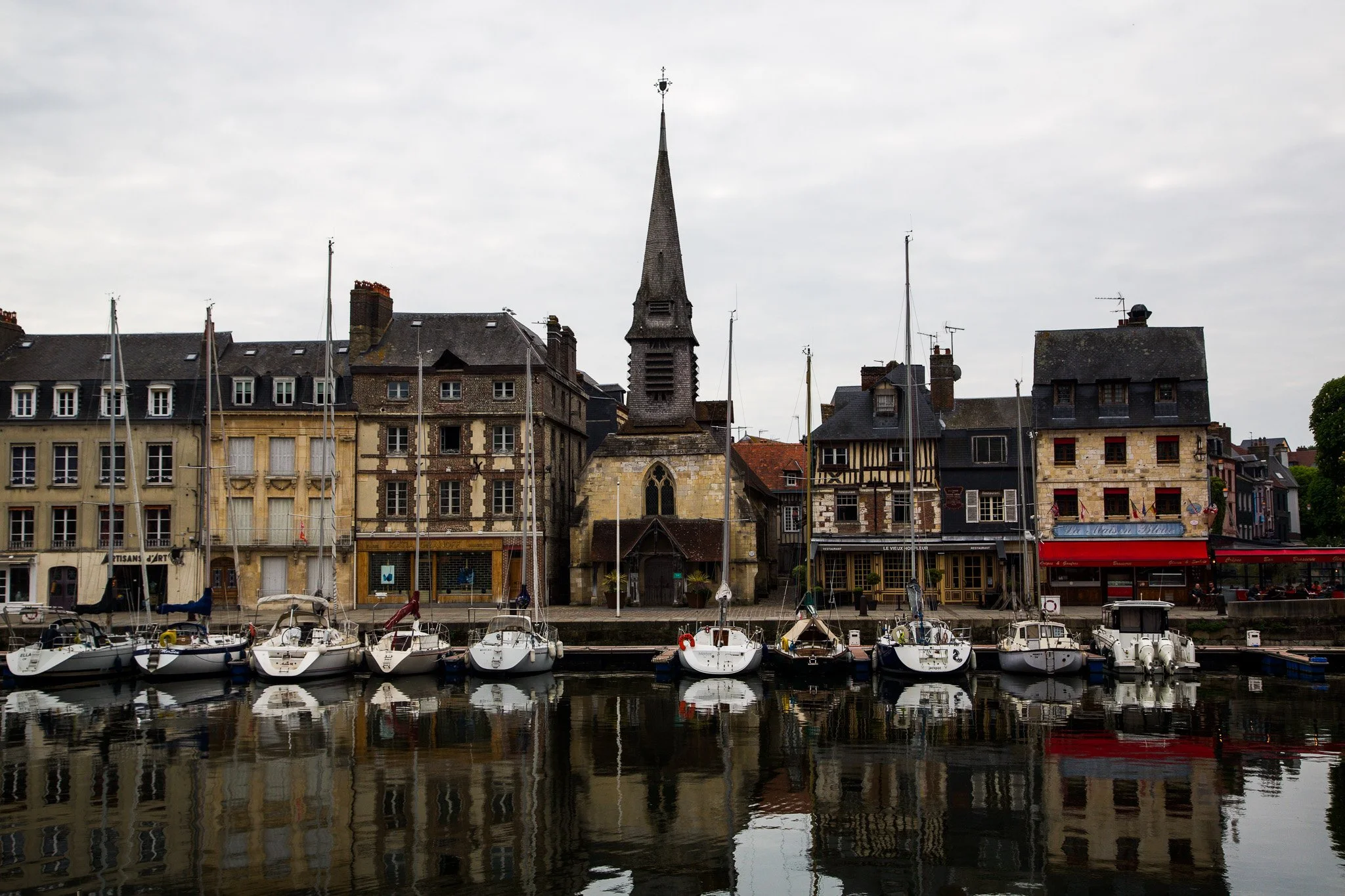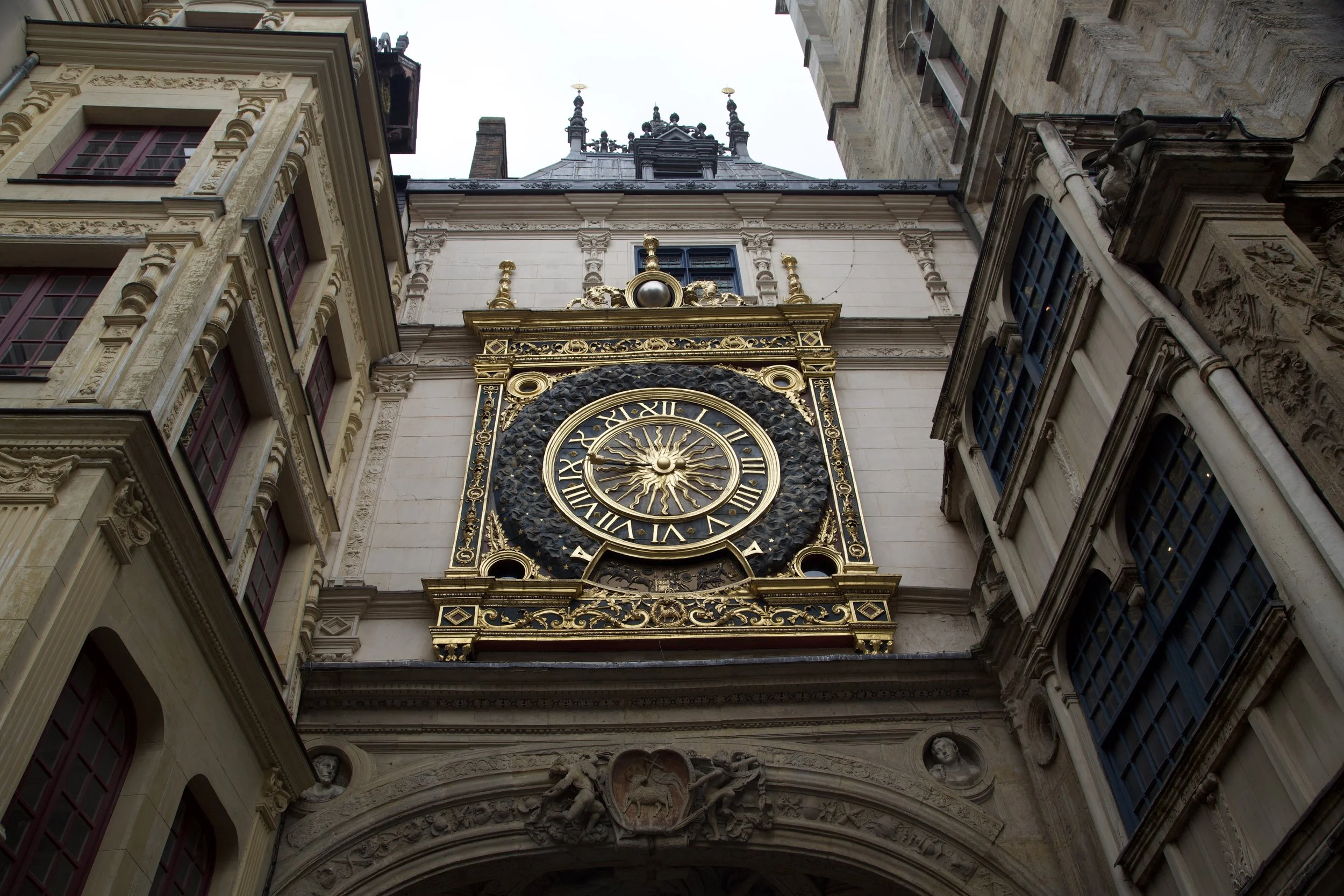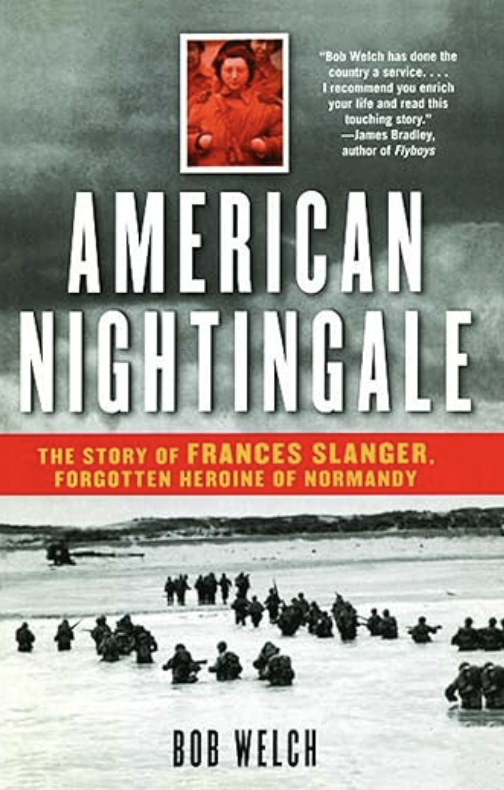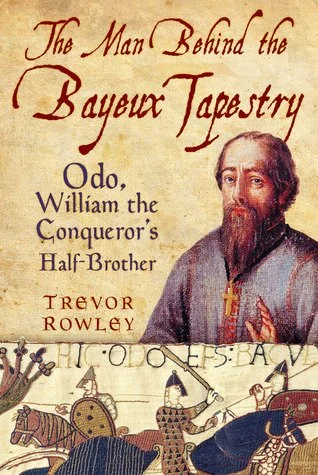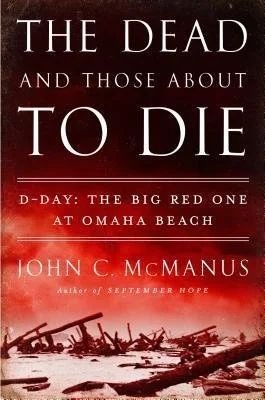
Before you Go
Western France for adults and teens
video clips
Books
.
documentaries
movies
puzzles
articles
games
Video Clips to watch before you go to Western France
Honfleur: Easy Going Marina 3:34
Explore Etretat 4:10
The Miracle of Dunkirk 2:14
Monet’s Garden 4:49
Rouen in Joan of Arc’s Footsteps 1:01
Remembering D-Day: Rich Steves 3:15
Discover Normandy 6:21
Bayeux: The Famous Tapestry 2:25
.
Mont Saint Michel: Rick Steves 4:07
Documentaries to watch before you go to Western France
-
From the 10th to 13th centuries, land across Europe was available for those brave enough to fight for it. One single province of France produced the men who took the most: the Normans.
In this three-part historical documentary series, historian Robert Bartlett embarks on an ambitious journey, bursting with colorful characters and illuminating detail, deep into the hearts and minds of this incredible warrior dynasty that transformed Europe.
.
-
The magnificent Mont Saint-Michel fortress has stood in the middle of a bay off the French coast of Normandy for centuries. It has come to symbolize a stubborn resistance to the passage of time and to the turbulence of European history.
This film journeys through the history of this indomitable fortress going back to the 8th century AD. Explore the legends that surround this timeless masterpiece.
-
When Claude Monet re-emerged from the depression that had led him to abandon painting, he devoted himself body and soul to his most colossal undertaking: The Grand Décoration - huge panels depicting his water lily pond, so all-enveloping that the viewer's gaze is lost in an atmosphere of serenity and peace.
This brand new and deeply immersive art film allows us to discover what gave Monet the inspiration to return to work, and to produce such a stunning and immortal work of beauty. Follow the River Seine on a visually stunning journey from La Havre to Giverny and Paris, through influential moments in the life of the world’s most influential painter, with astonishing up-close access to some of his greatest masterpieces.
Featuring special guest stars actress Elisa Lasowski (Game of Thrones), and presented with the exclusive participation of Ross King, author of the best seller Mad Enchantment: Claude Monet and the Painting of the Water Lilies.
-
"The Messenger: The Story of Joan of Arc" (1999) is a historical drama film directed by Luc Besson. The film stars Milla Jovovich as Joan of Arc, supported by an ensemble cast including John Malkovich, Faye Dunaway, and Dustin Hoffman. It portrays Joan's journey from a young girl with divine visions to a leader of the French army.
-
This immense embroidery of nearly 70 meters recounts the invasion of the Kingdom of England in 1066 by William Duke of Normandy. It traces an unparalleled odyssey through a period of major upheavals in History: the end of the Vikings and the beginning of the Knights and the feudal system in Europe.
-
Looking back on his life in 1920, Claude Monet recalls the story of the Impressionists a movement that shook the foundation of the art world. With his fellow painters, Auguste Renoir and Frederic Bazille, they begin a forty year struggle against the Salon, the annual state art exhibition. From meeting his hero Edouard Manet to the death of his wife and his lifelong struggles for success, Monet along with his friends and rivals ultimately find the success that they only dreamed was possible.
-
Personal stories, statistical data, and details surrounding the massive logistical effort of D-Day, the invasion of the beaches at Normandy, France, by the Allied Forces on June 6, 1944. This costly event led to the eventual liberation of Europe from Nazi Germany towards the end of World War Two. D-Day was, at its time, the most meticulously planned operation in military history. The film uses raw data gathered through forensic laser scanning, 3D computer modeling, and eye-witness accounts to shed new light on this important turning point in World War II.
-
Relive the bravery of the Dunkirk veterans in defenseless boats crossing the English Channel to rescue the stranded soldiers from the inferno through their uplifting stories of heroism in a battle that changed the course of WWII.
movies to watch before you go to Western France
-
Captain John Miller (Tom Hanks) takes his men behind enemy lines to find Private James Ryan, whose three brothers have been killed in combat. Surrounded by the brutal realties of war, while searching for Ryan, each man embarks upon a personal journey and discovers their own strength to triumph over an uncertain future with honor, decency and courage.
-
The year is 1066. William, the noble son of the late Duke of Normandy, embarks on a quest to invade medieval England in a quest to seize the rightful power of his homeland. Aided by his loyal men, a bloody battle ensues and William fights to fulfill his destiny and become the first Norman King of England. William the Conqueror.
.
-
In May 1940, Germany advanced into France, trapping Allied troops on the beaches of Dunkirk. Under air and ground cover from British and French forces, troops were slowly and methodically evacuated from the beach using every serviceable naval and civilian vessel that could be found. At the end of this heroic mission, 330,000 French, British, Belgian and Dutch soldiers were safely evacuated.
-
Marie-Laure lives in Paris near the Museum of Natural History, where her father works. When she is twelve, the Nazis occupy Paris and father and daughter flee to the walled citadel of Saint-Malo, where Marie-Laure's reclusive great uncle lives in a tall house by the sea. With them they carry what might be the museum's most valuable and dangerous jewel. In a mining town in Germany, Werner Pfennig, an orphan, grows up with his younger sister, enchanted by a crude radio they find that brings them news and stories from places they have never seen or imagined. Werner becomes an expert at building and fixing these crucial new instruments and is enlisted to use his talent to track down the resistance. Deftly interweaving the lives of Marie-Laure and Werner, Doerr illuminates the ways, against all odds, people try to be good to one another.
articles to read before you go to western france
Rouen History and Travel Insight
.
The Bayeux Tapestry
.
Normandy Remembered
Honfleur: Romantic Normandy
Claude Monet’s Garden
Battle of Dunkirk
The Best of France: Etretat
Monumental History: Mont Saint Michel
Books to Read before you go to Western france
-
Marie-Laure and her father flee Nazi occupy Paris carrying a valuable and dangerous jewel. In a mining town in Germany, Werner Pfennig, an orphan, uses his skills building crude radios to help the French Resistance. Against all odds, their lives interweave, as they form a bond, surviving WWII. Winner of the Pulitzer Prize.
-
The true story of the World War II evacuation portrayed in the Christopher Nolan film Dunkirk, by the #1 New York Times–bestselling author of Day of Infamy.
In May 1940, the remnants of the French and British armies, broken by Hitler’s blitzkrieg, retreated to Dunkirk. Hemmed in by overwhelming Nazi strength, the 338,000 men gathered on the beach were all that stood between Hitler and Western Europe. Crush them, and the path to Paris and London was clear.
Unable to retreat any farther, the Allied soldiers set up defense positions and prayed for deliverance. Prime Minister Winston Churchill ordered an evacuation on May 26, expecting to save no more than a handful of his men. But Britain would not let its soldiers down. Hundreds of fishing boats, pleasure yachts, and commercial vessels streamed into the Channel to back up the Royal Navy, and in a week nearly the entire army was ferried safely back to England.
Based on interviews with hundreds of survivors and told by “a master narrator,” The Miracle of Dunkirk is a striking history of a week when the outcome of World War II hung in the balance (Arthur Schlesinger Jr.).
-
Sometimes he dreamt he held her; that he would turn in bed and she would be there. But she was gone and he was old. Nearly seventy. Only cool paint met his fingers. “Ma très chère . . .” Darkness started to fall, dimming the paintings. He felt the crumpled letter in his pocket. “I loved you so,” he said. “I never would have had it turn out as it did. You were with all of us when we began, you gave us courage. These gardens at Giverny are for you but I’m old and you’re forever young and will never see them. . . .”
In the mid-nineteenth century, a young man named Claude Monet decided that he would rather endure a difficult life painting landscapes than take over his father’s nautical supplies business in a French seaside town. Against his father’s will, and with nothing but a dream and an insatiable urge to create a new style of art that repudiated the Classical Realism of the time, he set off for Paris.
But once there he is confronted with an art world that refused to validate his style, extreme poverty, and a war that led him away from his home and friends. But there were bright spots as his deep, enduring friendships with men named Renoir, Cézanne, Pissarro, Manet – a group that together would come to be known as the Impressionists, and that supported each other through the difficult years. But even more illuminating was his lifelong love, Camille Doncieux, a beautiful, upper-class Parisian girl who threw away her privileged life to be by the side of the defiant painter and embrace the lively Bohemian life of their time.
His muse, his best friend, his passionate lover, and the mother to his two children, Camille stayed with Monet—and believed in his work—even as they lived in wretched rooms, were sometimes kicked out of those, and often suffered the indignities of destitution. She comforted him during his frequent emotional torments, even when he would leave her for long periods to go off on his own to paint in the countryside.
But Camille had her own demons – secrets that Monet could never penetrate, including one that when eventually revealed would pain him so deeply that he would never fully recover from its impact. For though Camille never once stopped loving the painter with her entire being, she was not immune to the loneliness that often came with being his partner.
A vividly-rendered portrait of both the rise of Impressionism and of the artist at the center of the movement, Claude and Camille is above all a love story of the highest romantic order.
-
The heart-wrenching and inspirational WWII story of the first American nurse to die at the Normandy landings, the true account of a woman whose courage and compassion led to what a national radio show host in 1945 called "one of the most moving stories to come out of the war—a story of an army nurse that surpassed anything Hollywood has ever dreamed of."
She was a Jewish girl growing up in World War I-torn Poland. At age seven, she and her family immigrated to America with dreams of a brighter future. But Frances Slanger could not lay her past to rest, and she vowed to help make the world a better place—by joining the military and becoming a nurse.
Frances, one of the 350,000 American women in uniform during World War II, was among the first nurses to arrive at Normandy beach in June 1944. She and the other nurses of the 45th Field Hospital would soon experience the hardships of combat from a storm-whipped tent amid the anguish of wounded men and the thud of artillery shells.
Months later, a letter that Frances wrote to the Stars and Stripes newspaper won her heartfelt praise from war-weary GIs touched by her tribute to them. But she never got to read the scores of soldiers' letters that poured in. She was killed by German troops the very next day.
American Nightingale is the unforgettable, first-ever full-length account of the woman whose brave life stands as a testament to the American spirit.
-
Politically astute, ambitious, and beautiful, Yolande of Aragon, queen of Sicily, was one of the most powerful women of the Middle Ages. Caught in the complex dynastic battle of the Hundred Years War, Yolande championed the dauphin's cause against the forces of England and Burgundy, drawing on her savvy, her statecraft, and her intimate network of spies. But the enemy seemed invincible. Just as French hopes dimmed, an astonishingly courageous young woman named Joan of Arc arrived from the farthest recesses of the kingdom, claiming she carried a divine message-a message that would change the course of history and ultimately lead to the coronation of Charles VII and the triumph of France.
Now, on the six hundredth anniversary of the birth of Joan of Arc, this fascinating book explores the relationship between these two remarkable women, and deepens our understanding of this dramatic period in history. How did an illiterate peasant girl gain access to the future king of France, earn his trust, and ultimately lead his forces into battle? Was it only the hand of God that moved Joan of Arc-or was it also Yolande of Aragon?
-
Odo of Conteville, the younger half-brother of William the Conqueror, was ordained Bishop of Bayeux while still in his teens. A larger than life character, he is best known for commissioning the Bayeaux Tapestry, in which he makes a dashing appearance at the height of the Battle of Hastings. He also played a pivotal role in the planning and implementation of the Conquest of England, after which, as Earl of Kent, he was second only to William in wealth and power.The popular impression of Odo is of a not so loveable rogue, who typified the worst excesses of the Norman conquerors. He was the first Chief Justice of England and on occasion also acted as regent when the king was in Normandy. After allegedly defrauding both Crown and Church, however, Odo was disgraced and his plans to raise an unauthorised army for a campaign in Italy, possibly in order to gain the papacy, saw him imprisoned for five years. He was released by the dying William in 1087, but soon rebelled against the new king, his nephew William Rufus. Yet Odo was far from being a loutish philistine. The bishop recognized the value of education and the arts and amongst his less well-known activities was his generous patronage of both. Trevor Rowley’s book is the first full-length biography of Odo, which also seeks to redress this balance and to make Bishop Odo’s extraordinary life story known.
-
Normandy 1067---William may have conquered England, but it is a conquest of a different kind that one English earl has in mind.
Fresh from his defeat of King Harold at the Battle of Hastings, William of Normandy has returned home in triumph, accompanied by the English nobles he cannot trust to leave behind. For Waltheof of Huntington, however, rebellion is not at the forefront of his thoughts. From the moment he catches sight of Judith, daughter of the King’s formidable sister, he knows he has found his future wife.
When Waltheof saves Judith’s life, it is clear that the attraction is mutual. But marriage has little to do with love in medieval Europe. When William refuses to let the couple wed, Waltheof joins forces with his fellow rebels in an uprising against the King. William brutally crushes the rebellion, but realizes that Waltheof cannot be ignored. Marrying him to his niece, he decides, is the perfect way to keep him in check.
But is the match between the Saxon earl and Norman lady made in heaven or hell? As their children grow, Waltheof and Judith must choose between their feelings for each other and older loyalties. At the same time, the reputation of Waltheof’s Norman acquaintance Simon de Senlis continues to flourish. The son of William’s chamberlain, he shares a special bond with Waltheof, who rescued him from being trampled by a horse when he was a squire. Now Simon enjoys the confidence of both the King and the rebel earl. And when tension between the two ignites once more, it is Simon who is set to reap the reward.
Based on an astonishing true story of honor, treachery, and love, The Winter Mantle is historical fiction at its very best, reaching from the turbulent reign of William the conqueror to the high drama of the Crusades.
.
-
Chronicles the author's purchase and reconstruction of his family's farmhouse in Normandy and his collisions with plumbers, owls, France, food, laundry, and the hardware store
-
A white-knuckle account of the 1st Infantry Division’s harrowing D-Day assault on the eastern sector of Omaha Beach—acclaimed historian John C. McManus has written a gripping history that will stand as the last word on this titanic battle.
Nicknamed the Big Red One, 1st Division had fought from North Africa to Sicily, earning a reputation as stalwart warriors on the front lines and rabble-rousers in the rear. Yet on D-Day, these jaded combat veterans melded with fresh-faced replacements to accomplish one of the most challenging and deadly missions ever. As the men hit the beach, their equipment destroyed or washed away, soldiers cut down by the dozens, courageous heroes emerged: men such as Sergeant Raymond Strojny, who grabbed a bazooka and engaged in a death duel with a fortified German antitank gun; T/5 Joe Pinder, a former minor-league pitcher who braved enemy fire to save a vital radio; Lieutenant John Spalding, a former sportswriter, and Sergeant Phil Streczyk, a truck driver, who together demolished a German strong point overlooking Easy Red, where hundreds of Americans had landed.
Along the way, McManus explores the Gap Assault Team engineers who dealt with the extensive mines and obstacles, suffering nearly a fifty percent casualty rate; highlights officers such as Brigadier General Willard Wyman and Colonel George Taylor, who led the way to victory; and punctures scores of myths surrounding this long-misunderstood battle.
The Dead and Those About to Die draws on a rich array of new or recently unearthed sources, including interviews with veterans. The result is history at its finest, the unforgettable story of the Big Red One’s nineteen hours of hell—and their ultimate triumph—on June 6, 1944.
-
On the basis of 1,400 oral histories from the men who were there, bestselling author and World War II historian Stephen E. Ambrose reveals for the first time anywhere that the intricate plan for the invasion of France in June 1944 had to be abandoned before the first shot was fired. The true story of D-Day, as Ambrose relates it, is about the citizen soldiers - junior officers and enlisted men - taking the initiative to act on their own to break through Hitler's Atlantic Wall when they realised that nothing was as they had been told it would be. D-DAY is the brilliant, no holds barred, telling of the battles of Omaha and Utah beaches. Ambrose relives the epic victory of democracy on the most important day of the twentieth century.
games to play before you go to western france
.
-
June, 1944. Through the D-Day landings, the Allies have seized a foothold on the beaches of Normandy. Now you must lead your troops forward as you push deeper into France and drive the German forces back. You will face intense resistance, machine gun fire, and mortar bombardment, but a great commander can turn the situation to their advantage!
Undaunted: Normandy is a deck-building game that places you and your opponent in command of American or German forces, fighting through a series of missions critical to the outcome of World War II. Use your cards to seize the initiative, bolster your forces, or control your troops on the battlefield. Strong leadership can turn the tide of battle in your favour, but reckless decisions could prove catastrophic, as every casualty you take removes a card from your deck. Take charge amidst the chaos of battle, hold fast in the face of opposition, and remain undaunted.
-
You are the head of a fiefdom and its future is in your hands. Will you develop agriculture with fields and mills? Or will you become a pious church-builder or prefer to feast in your sumptuous palaces? Develop your lands in your image and become the most influential lord in the kingdom.
In Middle Ages, you explore the economics of medieval urban life through eight distinct tiles: fields, farms, villages, forts, markets, barracks, churches, and palaces. Each tile features its own scoring system, yet it's linked to others, offering an immersive gaming experience. Unleash strategic maneuvers, from daring assaults on rival fiefdoms to reserving tiles for future use. Harness the power of tactical combinations to amplify your income and pave your way to triumph! With an ever changing tile board, you need to be able to plan ahead but adapt to changing circumstances to make the best moves.
The richest player at the end of the 16th round wins.
-
A new 'Draw & Write' game in the Orléans universe! In Joan of Arc, you will draft followers that will help you move around France, gather goods, build buildings, establish trading stations, make money, and contribute to beneficial deeds. The player who best utilizes their followers will score the most points and win the game! How will you pave your path toward victory? Each round, a number of Follower Tiles are drawn from a bag. Players take turns drafting these Followers and taking actions that correspond to the Follower they chose. After all the Followers have been drafted, the bag resets and another round is played. Quick playing strategy board game with 45 minute playing time for 1-5 players. Game can be played solo or competitive with more players. In the Solo Mode, you compete directly against Joan of Arc. The Solo Mode also includes 3 difficult levels!
-
Build the most valuable art collection by trading and collecting famous works by fourteen of the greatest artists of all time, from Leonardo da Vinci and Rembrandt to Vermeer and Frida Kahlo. This card-based party game combines masterpieces and money--sure to be a hit at any game night, family gathering, or even as an ice breaker for your new book club. After all the cards are drawn, the player with the highest-value collections takes the prize. May the canniest--and luckiest--dealer win!







